Core Dry Laboratory
The dry lab performs advanced analysis and characterization of mostly environmental samples.
- Atomic Absorption Spectrometer (Flame and Graphite Furnace)
- Atomic Absorption Spectrometer (Flame and Graphite Furnace)
- ICP-OES
- Gas (ECD) Chromatograph
- Gas (FID) Chromatograph
- GC-MS Spectrometer
- UV-Vis Spectrometer
- Fluoroscence Spectroscopy
- Powder X-ray diffraction
- Ion Chromatograph
- Isotope Analyzer
- HPLC Chromatograph
Agilent 1260 Infinity HPLC
Based on the most often sold quaternary HPLC system new levels of performance are brought to you.A pressure range of up to 600 bar with a flow rate up to 5 mL/min allows the use of almost any column – conventional, sub-2 µm-particle or superficially porous columns.A UV, fluorescence or ELSD detector provides the data rate required for high resolution separations or fast analyses to give you highest confidence in your analytical results. And most important, with full backwards compatibility for your established methods achieve better detection performance, higher resolutions, faster separations than ever before on a quaternary LC system

Waters 600 HPLC Pump
Waters 600 Pump with stainless steel flow path features 50 ul pump head volume, maximum pressure 5000 psi (351.5 kg/cm2) and 0.01 to 5.0 ml/min operating flow rate. The waters 600E Multisolvent Delivery System offers no-compromise performance in a true single pump design. By combining two Waters patented technologies – time-proven solvent delivery and our innovative Random Phase Synchronization (RPS) software – the 600E Multisolvent Delivery System offers you unmatched performance compared with any other single pump gradient system.

PG Instruments T60 UV/VIS Spectrophotometer
The T60 UV/VIS is a split beam UV Visible Spectrophotometer with a fixed slit of 2nm, providing the functionality of an advanced instrument at an affordable price. The instrument covers a wavelength range of 190-1100nm. The T60 UV/VIS has a small footprint and includes UVWin 5 software offering photometric measurement, kinetics measurement, quantitative measurement, spectrum scan, and DNA/Protein analysis. The user friendly control software also offers many other applications such as access to data base, three-dimensional spectral analysis, GLP laboratory protocol, fast analysis of pesticide residues, drug, food, etc., required for environmental analysis. The system is supplied with an eight-position motorized cell holder as standard. The T60 UV/VIS boasts a performance comparable to larger and more expensive machines. It is designed for a wide range of applications, industries, sample sizes, and types.
Features
- Low Stray Light: stray light below 0.05%T
- Excellent Stability: superior material makes it stable and durable
- User Friendly Design: easy-to-use and simple maintenance
- UVWin 5 Software with Powerful Functions and User Friendly Operations:
- four regular functions: photometric measurement, kinetics measurement, quantitative measurement, spectrum scan
- 3D presentation by combining multiple spectra
- DNA/Protein analysis
- Hardware and Software Easily Updated:
- pre-programmed application cards to perform analysis such as DNA/Protein, photometric, kinetics, etc., can be easily inserted by the user
- the cell compartment is easily opened to allow other accessories to be used
- system is easily interfaced to a PC via a standard RS232 interface, and can be easily interfaced to many different printers
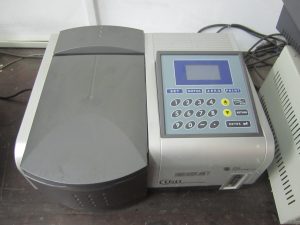
Nitrogen Dry Box
Ideal for working in your preferred inert gas atmosphere.850-NB, Nitrogen Dry Box with Shelf I Our Nitrogen Dry Box is a completely enclosed chamber which is ideal for working in a preferred atmosphere. Inert gases like Argon, Nitrogen, and Plasma are easily maintained. It is compact, portable, and lightweight.
The design makes is easily moveable from lab to lab. Refer to accessories 800 CART-I Everything you need is included with the unit. All you need is your gas of choice and research or production materials.

LAMBDA 950 UV/Vis/NIR Spectrophotometer from PerkinElmer
The LAMBDA 950 is one of the highest performance UV/Vis/NIR System for wavelengths up to 3,300 nm, high precision measurements, and for applications such as highly reflective and anti-reflective coatings, color correction coatings, bandpass characteristics of UV, Vis and NIR filters, and more.
Features/Benefits
All of our LAMBDA UV/Vis/NIR & UV/Vis Spectrophotometers offer features and accessories designed for maximum versatility delivering optimal performance and value:
- Universal Reflectance Accessory (URA) – Snap-on module, changes angle automatically – A PerkinElmer exclusive!
- Unmatched sample compartment size
- Dual Sampling Compartments offer more options
- Integrating spheres to 150mm
- General Purpose Optical Bench (GPOB) handles a wide range of samples;including lenses and telescopes
- Wide range of sampling modules requiring only seconds to change

Agilent Technologies 7820A GC System
The 7820A Gas Chromatography system is an affordable, high-quality GC instrument for small to medium-sized labs concerned with routine analyses. This system provides modern capabilities for a wide range of application areas, including a full range of detector options, such as Agilent’s single quadrupole mass spectrometer. Inlet devices for the 7820A GC allow analysis of liquid, gas, volatile, and solid samples.
Features
- Retention Time Locking (RTL) maintains exact retention times from injection to injection, column to column, instrument to instrument, and lab to lab
- Electronic Pneumatics Regulation (EPR) option provides the simplicity of manual operation with high precision digital display of pressure/flow and superior ease-of-use as compared to traditional manual pneumatics systems
- Great fit for routine MSD applications
- Single filament TCD that does not require a separate reference gas, does not require manual potentiometer adjustment, and provides a stable baseline without drift
- Auto-ranging FID provides the ability to detect and quantitate from parts per billion (ppb) to parts per thousand in a single injection
- Full electronic pneumatic control (EPC) from inlet to detection system
- Simplified GC front panel keys and display provide sequence information, instrument conditions, and run status, and minimize operating errors
- Software keyboard and display allows the user to control the system when it connects with an integrator or 3rd-party software

7697A Headspace Sampler
Headspace sampling allows you to introduce volatile compounds automatically, from virtually any sample matrix, directly into a GC or GC/MS. The 7697A Headspace Sampler is the newest headspace technology in Gas Chromatography. Based on the architecture of the market leading 7890A GC and 7693A ALS line of products, this sampler has been designed to exceed the expectations of the most demanding laboratories. The presence of Electronic Pneumatic Control in the 7697A ensures that your GC systems provide the best chromatographic performance – and the best results – available on the market.
CTC Analytics LC PAL Autosampler
The CTC Analytics PAL LC Autosampler is great for Mass Spectrometry sample injection because it combines liquid and large volume injection options in one single instrument. PAL delivers highly precise and accurate injections and random access to individual samples.
The autosampler employs XYZ mechanism for fast sampling and/or rapid vial to vial transfers. Fast injection cycles coupled with a large sample capacity make the HTS PAL ideal for high throughput screening, QA/QC applications, or LC/MS Flow Injection Analysis. We have the supplies to customize your PAL autosampler to fit your lab’s needs!
Features:
- Large volume injection
- Positioning Precision: ±0.1 mm
- XYZ mechanism for fast sampling and/or rapid vial to vial transfers
- Peltier Cooling: controlled Peltier cooling to prevent sample degradation
- DLW Option: Low carryover due to the self-cleaning Dynamic Load and Wash module
- MS-Data Systems Supported by PAL: (Purchase of control software may be required)
- Analyst, ChemStation (LC/GC/MSD), Clarity, MassLynx, MassHunter (GC/MS & LC/MS), Xcalibur, Empower 2, Chromcard, ChromPerfect, ChromQuest, EZChrom, Master Lab, MS Workstation, QuanLab
Specification:
- Sample Capacity:
- 6 deepwell plates (96 or 384)
- 6 microplates (96 or 384 wells) option
PAL Sample Control Interfaces seamlessly with most of the major chromatographic or MS data systems only one sample list has to be handled. With a few clicks sample lists are generated or imported. Now PAL Sample Control starts the operation and the data acquisition.

Liaison Universal Interface
The Liaison Universal Interface (A0301) connects commercially available solid and liquid bulk sample preparation instruments—including the Picarro Combustion Module—to Picarro analyzers for high-precision carbon isotope (13C) measurements.
- Connects bulk sample preparation instruments to Picarro analyzers
- Fully automated for high-throughput operation
- Low-cost, simple operation
- Laboratory and field deployable
The Liaison Universal Interface is software-controlled by way of a standalone utility accessible through a desktop icon installed on the Picarro carbon isotope analyzer. Or the interface and analyzer can be controlled jointly and remotely through a standard remote desktop connection or with remote login software. This makes the interface ideal for laboratory and remote, field operation.
Cavity ring-down spectroscopy (CRDS) is a laser-based absorption spectroscopy technique that is starting to find extensive application as a consequence of the very high sensitivity of the method compared with more traditional absorption spectroscopy techniques. We describe the experimental implementation of CRDS and its application to a number of areas of research including laser diagnostics of hostile environments, reaction kinetics and spectroscopy, with particular emphasis on our ongoing studies of the fast (sub-nanosecond) predissociation of electronically excited states of small molecules and radicals.
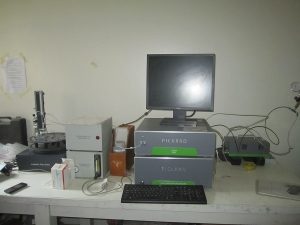
Wagtech 6405 UV/Vis Spectrophotometer
The 64 series scanning units are ideal for all routine teaching, laboratory and research environments. Modes are available for photometrics, spectrum, kinetics, multi-wavelength analysis and quantitation using standard curve methods. These units have full scanning capability with three scan speeds and intervals, baseline correction, instant display of scan, automatic axis scaling, peak and valley data display and capacity to store two scans.
Sample flexibility is a key feature, with cells from 100mm path length down to micro sample capacity being readily accommodated. To further increase flexibility a wide range of accessories are also available.
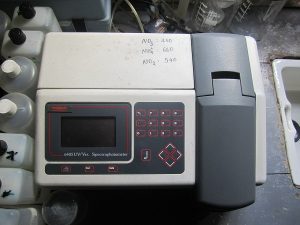
FluoroMax-4 Compact Spectrofluorometer
The FluoroMax-4 is a compact spectrofluorometer from SPEX, yet it offers the ultimate sensitivity in fluorescence investigations as well as features not found in most table-top fluorescence detection systems. The FluoroMax-4 now has 33% higher sensitivity and 20% better signal-to-noise ratio than the FluoroMax-3.
The Source
Starting with a xenon source that supplies prime UV performance, we mount the bulb vertically, since horizontal mounting leads to sagging of the arc that increases instability and decreases the useful life.
The xenon source is focused onto the entrance slit of the excitation monochromator with an elliptical mirror. Besides ensuring efficient collection, the reflective surface keeps all wavelengths focused on the slit, unlike lenses with chromatic aberrations that make them totally efficient only at one wavelength.
As an option an additional, software-selectable, xenon flash lamp can be fitted to enable phosphorescence studies.
The Slits
The slits themselves are bilaterally, continuously adjustable from the computer in units of bandpass or millimeters. This preserves maximum resolution and instant reproducibility.
The Excitation Monochromator
The excitation monochromator is an aspheric design which ensures that the image of the light diffracted by the grating fits through the slit. The gratings themselves are plane, blazed gratings that avoid the two major disadvantages of the more common concave holographic gratings: poor polarization performance and inadequate imaging during scans that throws away light. The unique wavelength drive scans the grating at speeds as high as 80 nm/s. The grating grooves are blazed to provide maximum light in the UV and visible region.
The Reference Detector
Before the excitation light reaches the sample, a photodiode reference detector monitors the intensity as a function of time and wavelength. The photodiode detector has a wider wavelength response than the older, traditional rhodamine-B quantum counter, and requires no maintenance.
The Sample Chamber
A spacious sample chamber is provided to allow the use of a long list of accessories for special samples, and encourages the user to utilize a variety of sample schemes.
The Emission Monochromator
All the outstanding features of the excitation monochromator are also incorporated into the emission monochromator. Gratings are blazed to provide maximum throughput in the visible region.
The Emission Detector
Emission detector electronics employ photon-counting for the ultimate in low-light-level detection. Photon-counting concentrates on signals that originate from fluorescence emission, ignoring smaller signals originating in the detector tube (PMT). The more common method of analog detection (used by lower performance fluorometers) simply adds noise and signal together, masking weak emissions.
The emission detector housing also contains an integral high-voltage supply which is factory set to provide the signal-to-noise ratio.
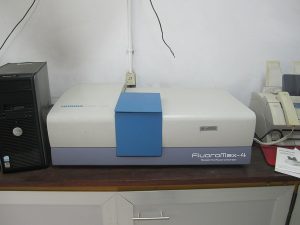
AUTOPOL IV Polarimeter
The AUTOPOL IV is a microprocessor based automatic polarimeter that is available in one, two and six wavelength versions. The AUTOPOL IV’s features include: readout in specific rotation, optical rotation and concentration, customer defined and labeled programs for push button readout, large LCD display and touchscreen user interface, temperature display and correction, push button wavelength selection, statistics, RS 232 and parallel printer ports.
Measurement Modes:
The AUTOPOL IV Polarimeter can readout directly in one of four measurement modes: Optical Rotation, Specific Rotation, Concentration or Specific Rotation Plus. Specific Rotation Plus allows a correction to be applied to a result for loss on drying. Each measurement mode can be activated via touchscreen selection. Sample tubes can be specified at any length (e.g. 50mm, l00mm, 200mm), or entered as a precise dimension (e.g., 199.98mm). Concentration is entered as a percentage.
Temperature Control of Samples:
Temperature control of samples is allowed through rubber gasketting in the Autopol door, which permits tubing to be connected from an external temperature controlled Water Bath to the jacket of a jacketed polarimeter sample tube.
Multiple Wavelengths:
The AUTOPOL IV Automatic Polarimeter comes in single, dual and six wavelength models. Wavelength selection is completely automatic and is accomplished via menu selection. There are no lamps or filters to manually remove or insert. The following wavelengths are available: 365nm, 405nm, 436nm, 546nm, 589nm and 633nm. Optional wavelengths include: 325nm, 578nm, 880nm and various other wavelengths are available; contact the factory for more information.
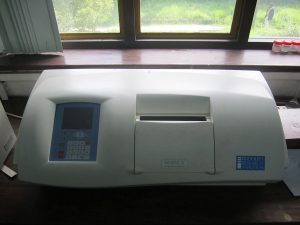
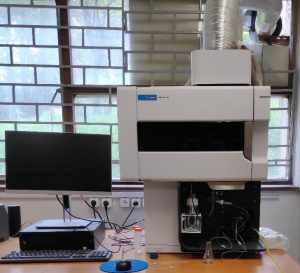
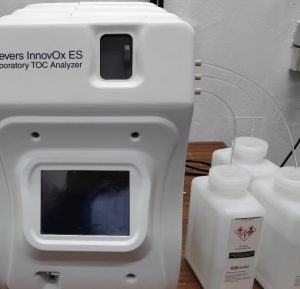
;

